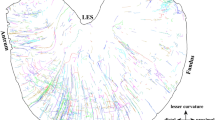Abstract
THE older anatomists believed that the sympathetic trunks were attached to various cranial nerves; but nowadays the conception that they commence above in the superior cervical ganglia is apparently unquestioned, and the internal carotid nerves are described as branches of distribution of these ganglia. Is this modern view correct, or do the trunks really proceed farther in a rostral direction? They probably do, although not in the manner or position indicated by the classical authors. One suggests that the internal carotid nerves are cephalic portions of the sympathetic trunks, and the evidence in favour of this idea will be summarized here and given in detail elsewhere.
This is a preview of subscription content, access via your institution
Access options
Subscribe to this journal
Receive 51 print issues and online access
$199.00 per year
only $3.90 per issue
Buy this article
- Purchase on Springer Link
- Instant access to full article PDF
Prices may be subject to local taxes which are calculated during checkout
Similar content being viewed by others
Author information
Authors and Affiliations
Rights and permissions
About this article
Cite this article
MITCHELL, G. Rostral Extremities of the Sympathetic Trunks. Nature 170, 533–534 (1952). https://doi.org/10.1038/170533b0
Issue Date:
DOI: https://doi.org/10.1038/170533b0
This article is cited by
-
The terminal insertional segments and communications of the vertebral nerve in the human cervical region
Surgical and Radiologic Anatomy (2009)
Comments
By submitting a comment you agree to abide by our Terms and Community Guidelines. If you find something abusive or that does not comply with our terms or guidelines please flag it as inappropriate.



